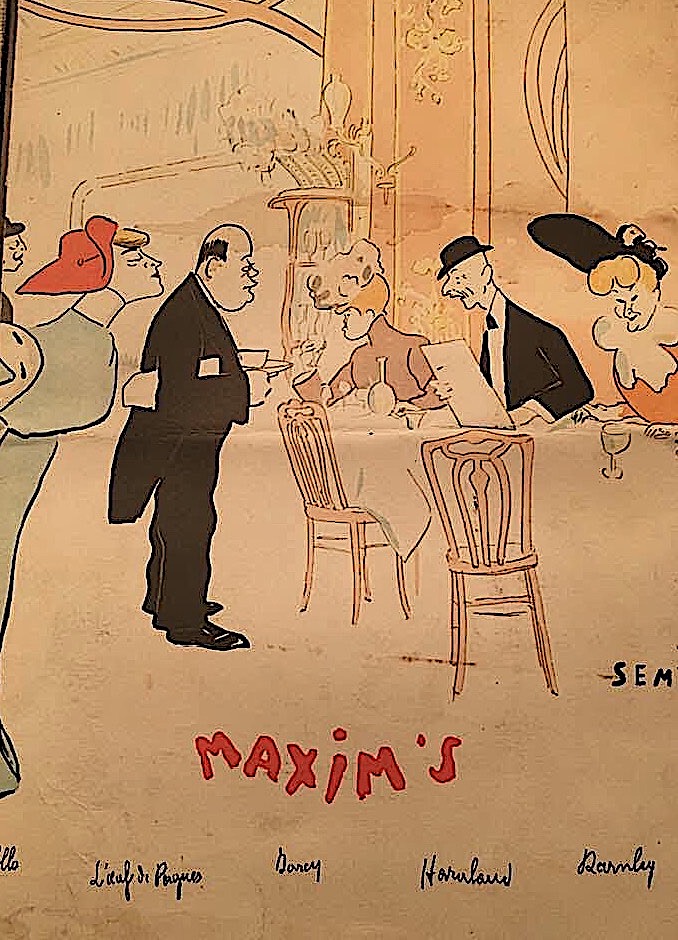
❖❖❖
IN THIS ISSUE
ETIQUETTE ABROAD
By John Mariani
NEW YORK CORNER
LOVE AND PIZZA
CHAPTER TWENTY-EIGHT
By John Mariani
NOTES FROM THE WINE CELLAR
NEW MERLOTS IN THE MARKET
By John Mariani
❖❖❖
How To Avoid Coming Off as a Rube
By John Mariani
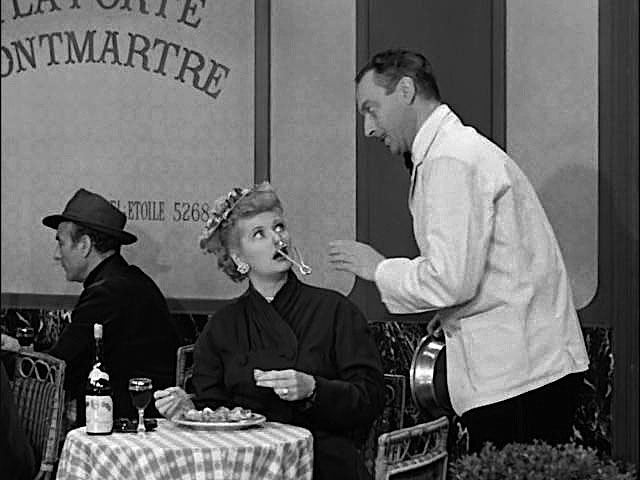
When traveling abroad returns to
something close to normalcy after Covid,
Americans who have not dined out in Europe or
Asia will need to know some of the etiquette
rules that people in other cultures consider the
sign of a civilized person—even when some of
those rules seem downright silly, based on ideas
of manners that went out of date a century ago.
It's not just a simple matter of knowing
what fork and knife to use in a multi-course meal
(in Europe you begin with those farthest out to
the left and right of your plate) or of using your
fingers to eat asparagus in France. Sometimes you
can really, really offend your host and his entire
family by doing something you believe wholly
innocent yet to them is an abject horror of
barbaric behavior.
Despite the old adage that "you are what
you eat," you are also judged by how you eat, and
manners differ radically around the world. 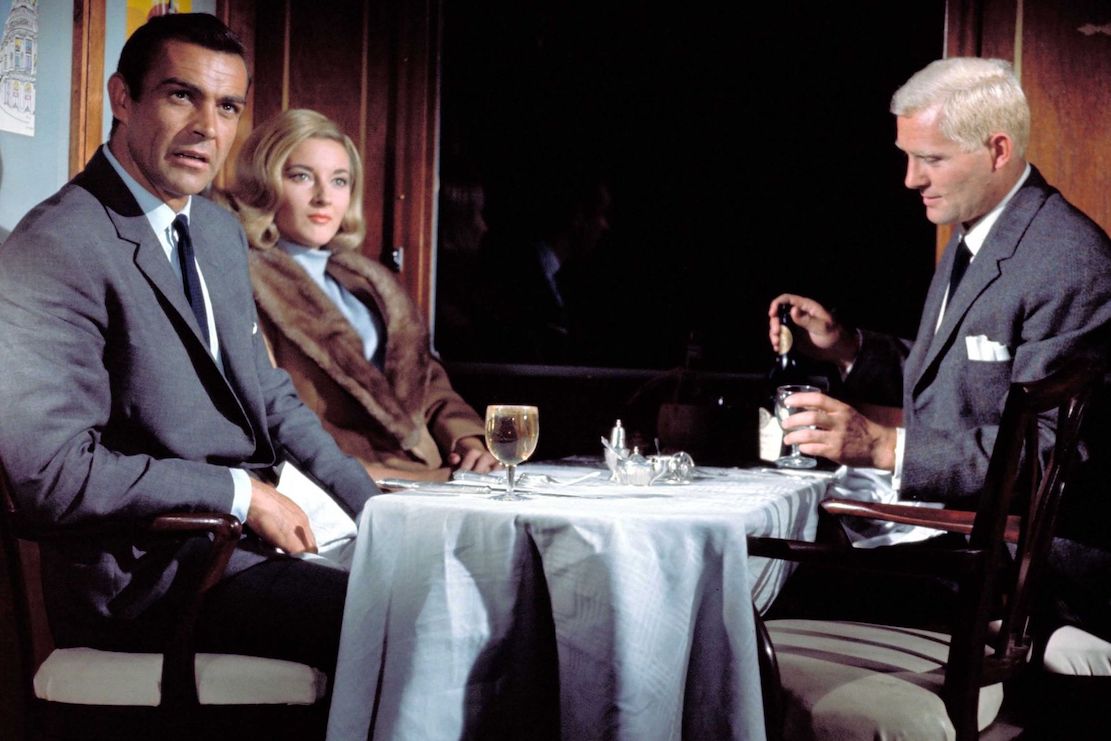
Indeed, as necessary as his Walther PPK and
fluency in several languages was to his survival
in foreign countries, James Bond's knowledge of
correct behavior at the table was crucial
information.
Indeed, when he once let his guard slip in
From Russia
with Love and found himself at gunpoint with
a SPECTRE assassin posing as a worldly British
agent, Bond remembered what the man ordered for
lunch: "Red
wine with fish," says 007 regretfully. "That
should have told me something."
Hey, you never know.
In a world where one-third of the people
eat with their fingers, one third with chopsticks,
and one-third with forks and knives, it gets
pretty tricky knowing how to handle yourself at
tables abroad. Here are some tips to help you save
face.
— In Hungary never clink glasses for
a toast. Back when Austrian troops occupied
Budapest, they'd always do that just before
shooting another Hungarian.
— In Turkey use only the right hand
to pick up food and wipe that hand on the
napkin. Never use your left hand, which in Arab
countries is used for quite another purpose.
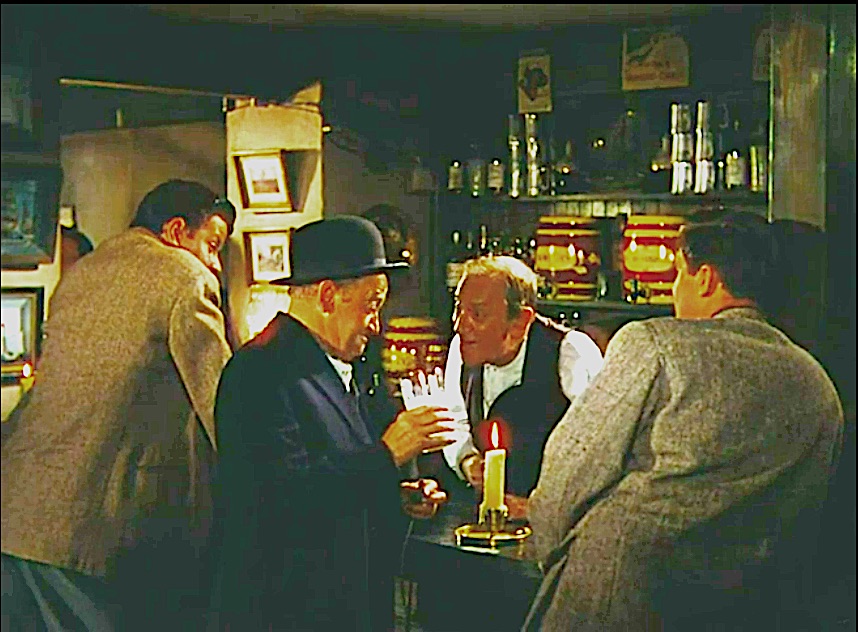
— Never tip in a pub.
— In England during tea time you
should not pour your own, but ask instead for the
hostess or waiter to do so. 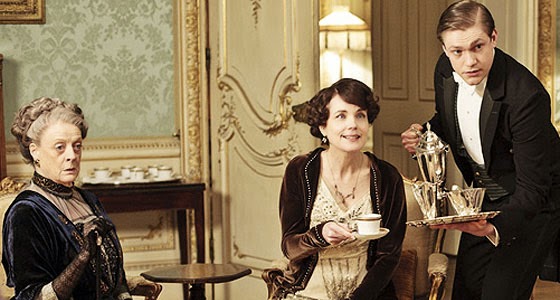
— In Arab countries belching is considered a sign
of your enjoyment of a meal. So, feel free to let
go.
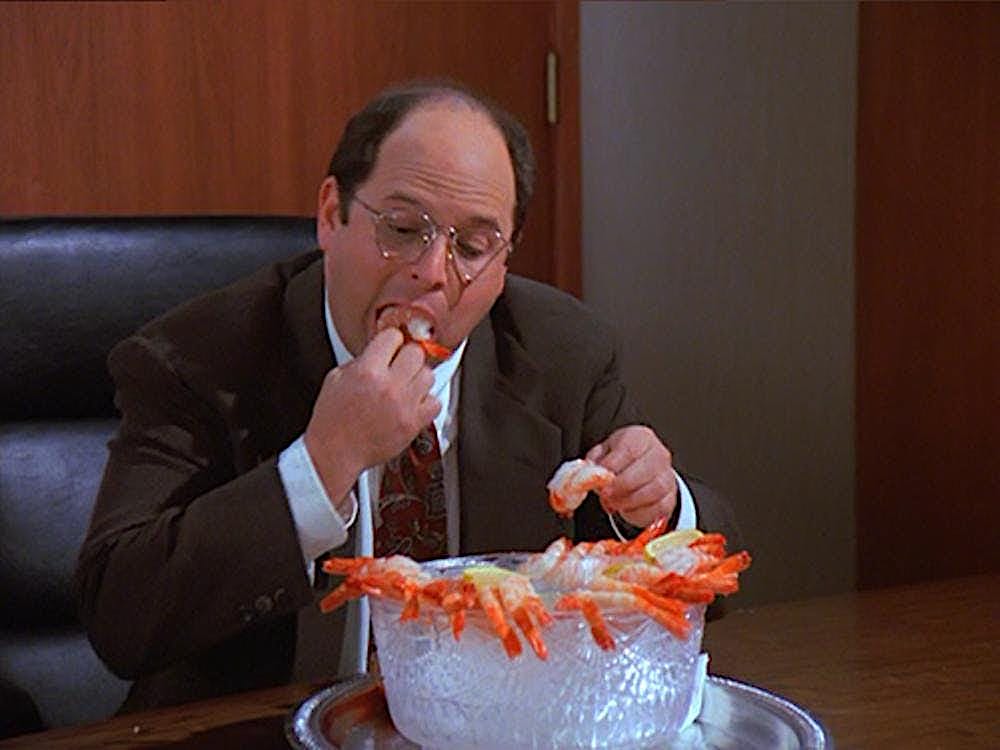 —
In Egypt pour your tea into the cup until it
spills out into the saucer.
—
In Egypt pour your tea into the cup until it
spills out into the saucer.
— In France the only foods you may
eat with your fingers are frites, asparagus,
raw shellfish, and frogs' legs.
— In China use chopsticks to take
food from the serving plate, then place the food
atop your rice—never from plate to your
mouth. If there is a lazy Susan, it is
impolite to remove the dish from it.
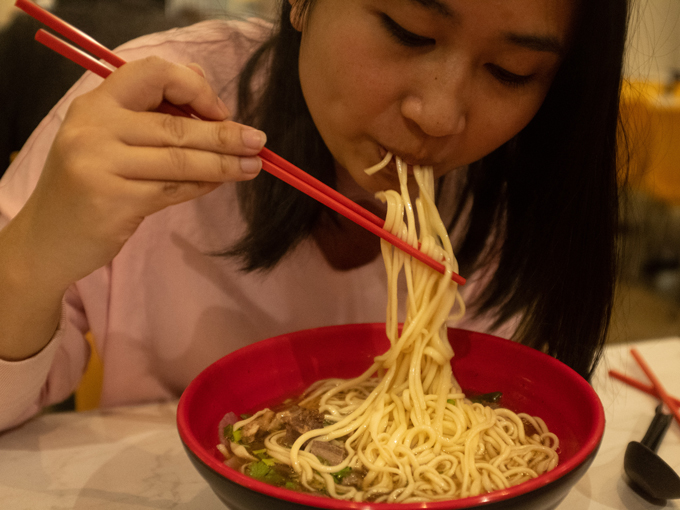
— Don’t be put off by Asians who
loudly slurp their noodles.
— In Hong Kong and Taiwan, the more
spots you leave on the tablecloth the more you are
thought to have loved the food.
— When picking up sushi with
chopsticks, dip the fish side into the soy sauce,
not the rice, which may fall apart. It is also
permissible to pick up sushi with your fingers,
but not sashimi.
— Never pass food to another person
using your chopsticks (which resembles the
symbolic passing of a deceased relative’s bones at
a Japanese
funeral) or stick your chopsticks in your rice and
leave them sticking up (which resembles incense
sticks that figure in funeral services.)

— Never ask a sushi chef if his food is “fresh.”
— In Thailand don't ask for
chopsticks; Thais use forks and spoons.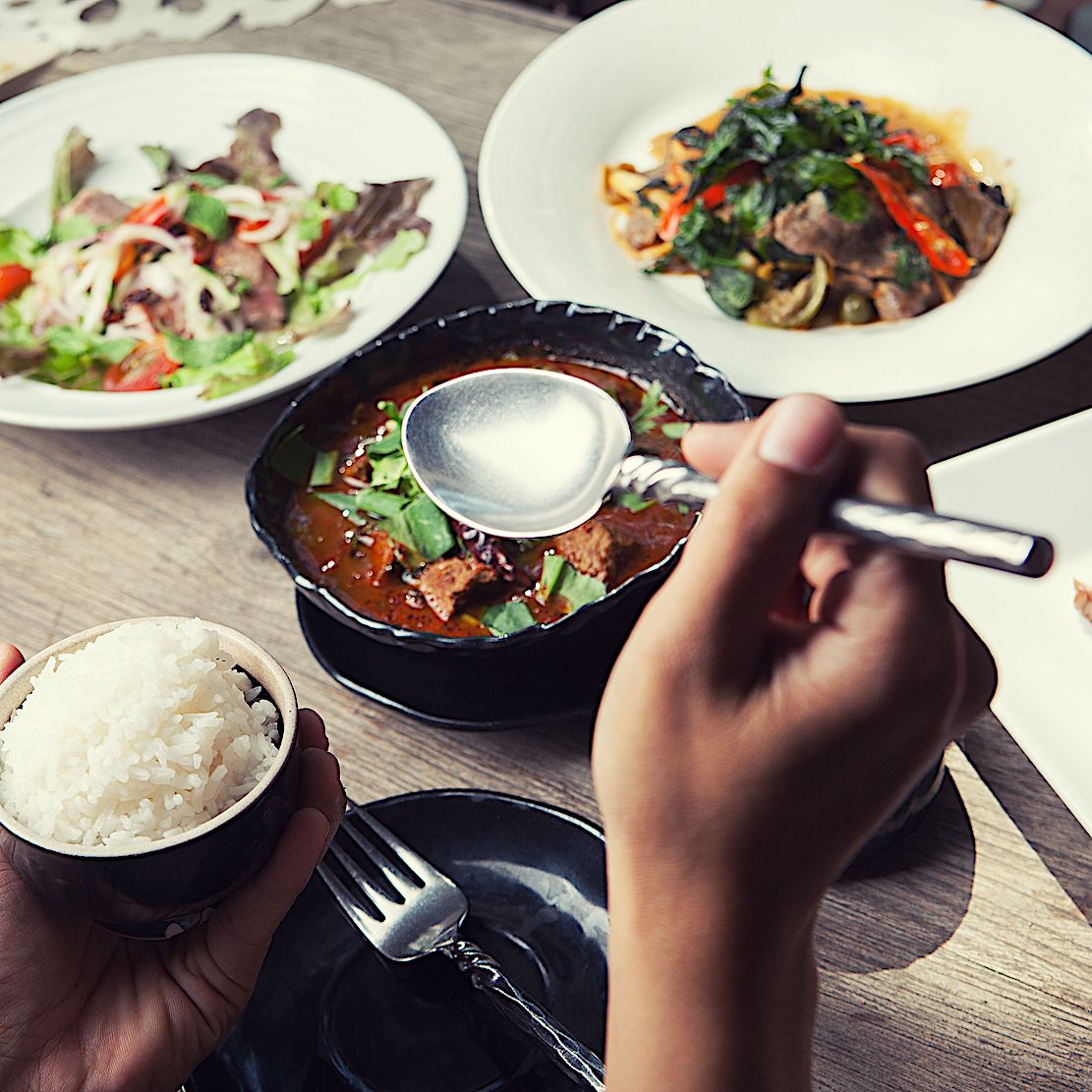
— In Italy do not wait for everyone
to be served their pasta before eating yours. “Amici e
pasta, se non sono caldi, non sono buoni”
means “If friends and pasta are not warm, they are
not good.”
— In Europe the fork is held in the
left hand and the knife in the right, and never
exchanged after cutting the food, as we do in the
U.S.
— In Italy no one drinks cappuccino
after noontime.
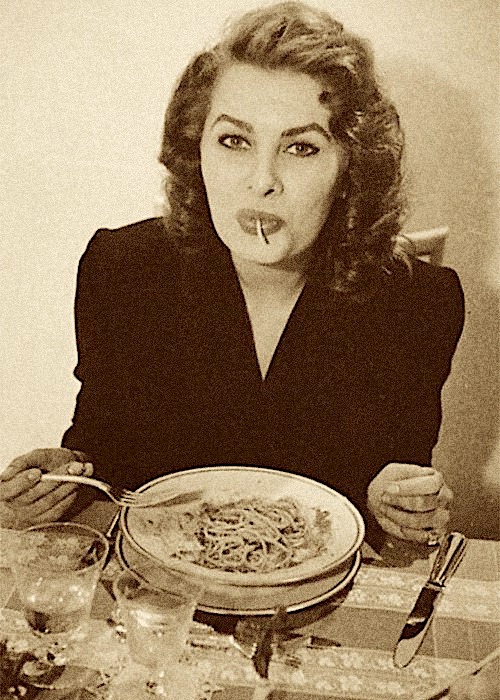
— In Italy do not ask for a
tablespoon to help you swirl spaghetti onto your
fork. Only a non-Italian would do that.
— Never bring a gift of wine to a
hostess in Italy or Portugal, where it is
considered an insult to the host’s generosity.
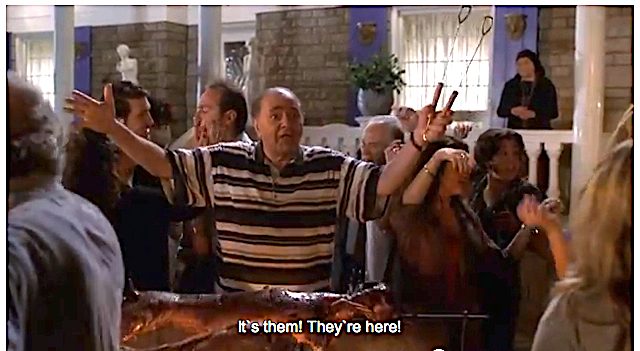
— In Japan do not lean your
chopsticks on the food plates or bowls.

— In Russia do not sip vodka. Knock it back, and
only when the host offers a toast.
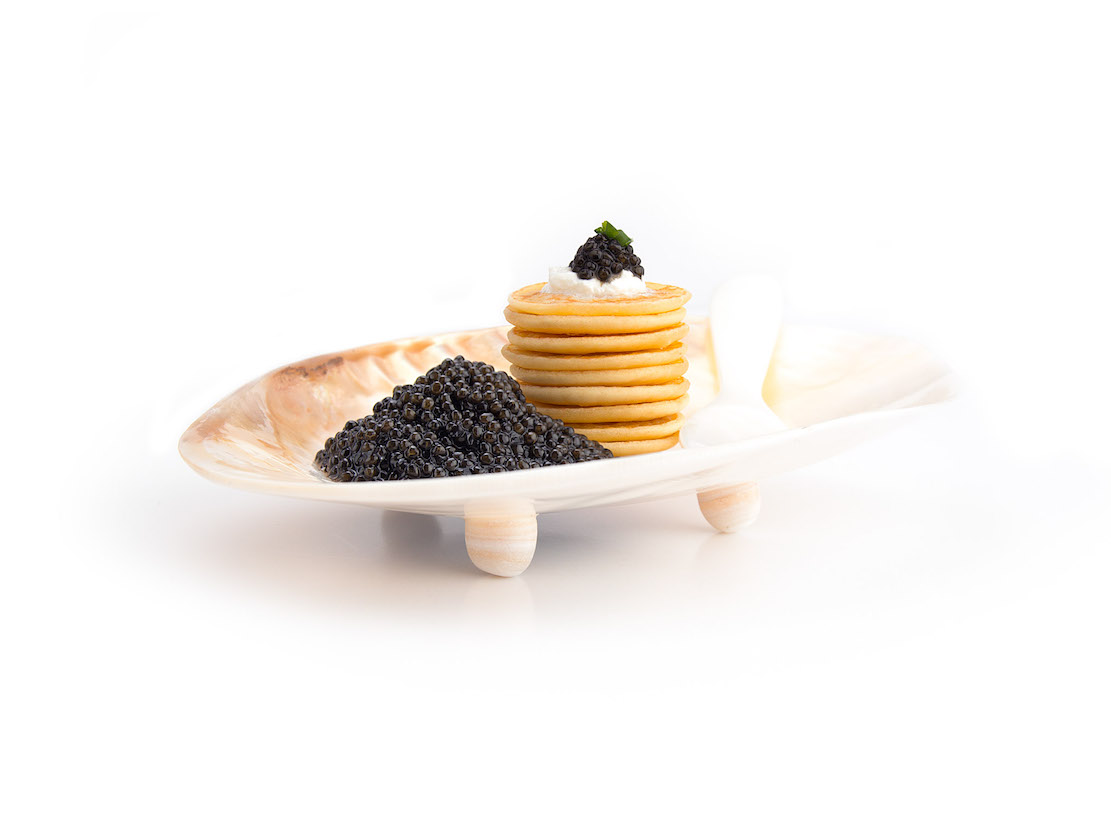 — When served caviar,
do not ask your Russian host for condiments like
onion or chopped egg, which Russians consider a
barbaric way to mask the purity of sturgeon
roe. Caviar is eaten on blini pancakes
smeared with melted butter .
— When served caviar,
do not ask your Russian host for condiments like
onion or chopped egg, which Russians consider a
barbaric way to mask the purity of sturgeon
roe. Caviar is eaten on blini pancakes
smeared with melted butter .
—And, yes, in Italy you may eat your pizza folded
with your fingers or cut with a knife and
fork.
❖❖❖
By John Mariani
LOVE AND PIZZA
Since, for the time being, I am unable to write about or review New York City restaurants, I have decided instead to print a serialized version of my (unpublished) novel Love and Pizza, which takes place in New York and Italy and involves a young, beautiful Bronx woman named Nicola Santini from an Italian family impassioned about food. As the story goes on, Nicola, who is a student at Columbia University, struggles to maintain her roots while seeing a future that could lead her far from them—a future that involves a career and a love affair that would change her life forever. So, while New York’s restaurants remain closed, I will run a chapter of the Love and Pizza each week until the crisis is over. Afterwards I shall be offering the entire book digitally. I hope you like the idea and even more that you will love Nicola, her family and her friends. I’d love to know what you think. Contact me at loveandpizza123@gmail.com
—John Mariani
To read previous chapters go to archive (beginning with March 29, 2020, issue.
LOVE AND PIZZA
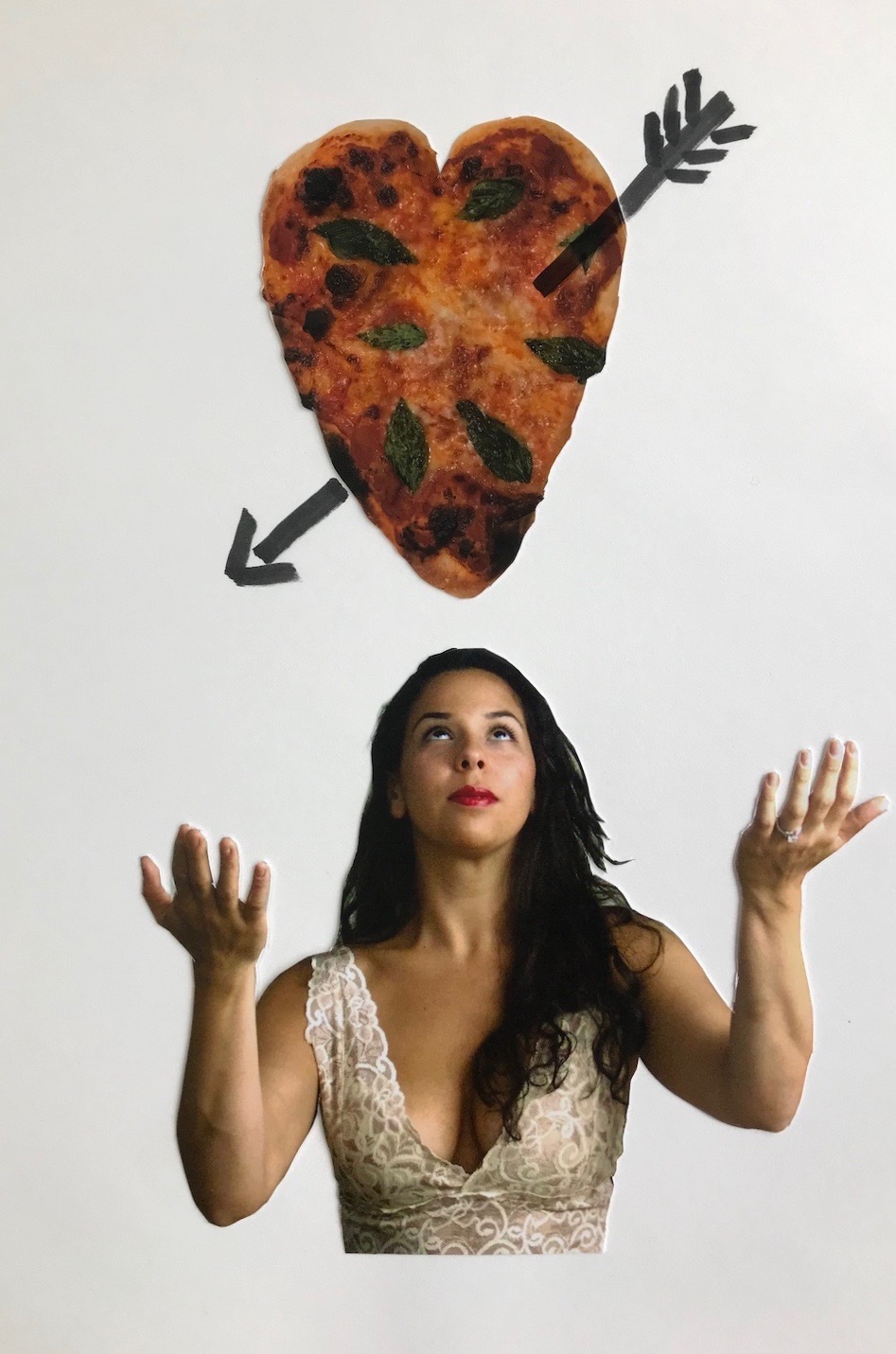
Cover Art By Galina Dargery

Rainey Memorial Gates at the Bronx Zoo
“There they are,”
Elena said, pointing to a truck from which
photographic equipment was being unloaded and
brought into a wholly nondescript brick
apartment building. “We’re here.”
Several of the staff, including Nicola,
looked at each other, wondering why they were
here at a place that seemed like the  most
unphotogenic spot in the world. They
piled out and Elena turned to everyone and said,
“People, you are standing on sacred ground. Welcome
to 1520 Sedgwick Avenue, where hip hop was
born.” Then
she turned to a young, good-looking black man in
baggy jeans, a New York Knicks jersey, aviator
glasses and baseball cap turned backwards and
said, “FX, tell them about this place.”
most
unphotogenic spot in the world. They
piled out and Elena turned to everyone and said,
“People, you are standing on sacred ground. Welcome
to 1520 Sedgwick Avenue, where hip hop was
born.” Then
she turned to a young, good-looking black man in
baggy jeans, a New York Knicks jersey, aviator
glasses and baseball cap turned backwards and
said, “FX, tell them about this place.”
Amazingly, the young man began to perform
a history of the place they were standing in
front of, all in rap.
“Now you people
prob'ly didn’t know it,
’Cause
there’s nothin’ ‘round here to show it.
And
there’s nothin’ on the Exxon map here
Make you
think someone invented rap here.
But back
in nineteen seventy three
In this
South Bronx community
A funk DJ
who was Jamaican
Showed
everybody he wasn’t fakin’.”
The rap went on to
describe how a Jamaican immigrant named Clive
Campbell, known as DJ Kool, on August 11, 1973,
had presided over a house party in the
building’s community rec room (below),
where kids started improvising lyrics to a
continuous funk beat. Other
Bronx deejays joined the parties and soon hip
hop groups were forming around the borough, with
names like The Herculoids, and the neighborhood
took on the name “Boogie Down Bronx.”
 After finishing the
rap, the
young man received applause from the Willi
staff, and Elena introduced them. “People,” she
said, “This is FX Sledg, who’s kind of
unofficial keeper of the flame here, where rap
all began.
And
he’s got an album coming out just around the
time of Willi’s
first issue.
So, he’s going to pose with Nikki in the
community room here.”
After finishing the
rap, the
young man received applause from the Willi
staff, and Elena introduced them. “People,” she
said, “This is FX Sledg, who’s kind of
unofficial keeper of the flame here, where rap
all began.
And
he’s got an album coming out just around the
time of Willi’s
first issue.
So, he’s going to pose with Nikki in the
community room here.”
Still astonished, the staff now realized
why they’d brought the clothes they did, for
they showed off some young designers’ take on
hip hop gear, with finer fabrics in more
striking colors and patterns. Nicola’s
outfit was of a kind a girl in the Bronx would
wear to a hip hop party—with a red,
off-the-shoulder Latina blouse that left the
midriff bare, worn with ballooning black pants
cut mid-shin and decorated with ribbons down the
outer seams.
Everyone went inside and down to the
basement rec room, which looked like every other
basement rec room they’d ever seen, completely
without décor except for a folding table with
some plastic red and blue soda cups and liter
bottles of Coke and Gatorade. On the
floor was a boom box the size of a suitcase. As the
lights and reflector screens were being set up,
Diana took Nicola aside and started on her
makeup and hair—which was a wig streaked with
fluorescent colors—while Banks got the clothes
ready. Fifteen
minutes later, with FX Sledg’s album blaring
from the boom box,
Hector Saint-Nazaire began snapping
photos and fifteen minutes after that he’d
finished, insistent that taking any more time
would spoil the spontaneity of the moment.
When it was over, Diana turned to Elena
and said, “Nikki’s a natural. I can’t believe
she hasn't been modeling for years.”
“I told you,” said Elena. “Okay, people,
let’s pack it up, get some lunch and try to get
in a second location today.”
After nibbling some food from a local
tacqueria, the staff drove just a few blocks
south before Yankee Stadium loomed into full
view. “Our next location,” said Elena.
There was no game that day—and Elena had
not only managed to get clearance for the photo
shoot inside the stadium but also to enlist 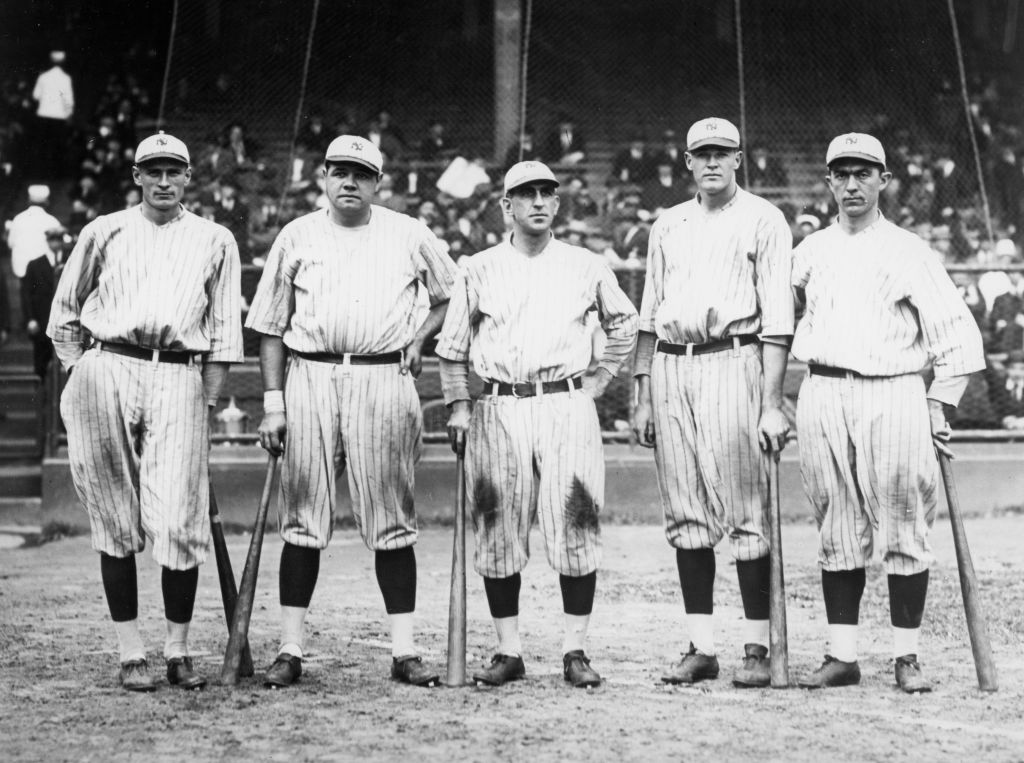 the
participation of
29-year-old Yankees catcher Juan Espiño,
originally from the Dominican Republic, to pose
with Nicola.
He was dressed in a stunning
featherweight wool one-button suit woven in the
Yankees signature white-with-blue pinstripes, an
elegant take on an iconic uniform by another
Latino designer.
The suit had razor-sharp trouser pleats
and a perfect break at the cuffs, the shoulders
slightly roped, the buttons on the cuffs
unbuttoned.
Espiño’s shirt was white, with a wide
navy blue club tie with the interlocking letters
N and
Y
that formed the Yankees emblem.
the
participation of
29-year-old Yankees catcher Juan Espiño,
originally from the Dominican Republic, to pose
with Nicola.
He was dressed in a stunning
featherweight wool one-button suit woven in the
Yankees signature white-with-blue pinstripes, an
elegant take on an iconic uniform by another
Latino designer.
The suit had razor-sharp trouser pleats
and a perfect break at the cuffs, the shoulders
slightly roped, the buttons on the cuffs
unbuttoned.
Espiño’s shirt was white, with a wide
navy blue club tie with the interlocking letters
N and
Y
that formed the Yankees emblem.
Opposite Espiño, Nicola stood wearing a
sexy take-off on the very un-sexy umpire’s
uniform—a knit shirt stretched to the breaking
point over the inevitable corpulent paunch of
the official, with gray slacks in an equally
poor fit. Nicola’s
version began with a perfectly fitted dark polo
shirt with white collar in cotton lisle, with
the designer’s logo on the breast, and
beautifully tailored pleated gray gabardine
trousers that hugged her hips then flared at the
bottom. On
her head she wore a black sequined umpire’s cap. The
finished photo showed the two of them pointing
fingers in each other’s face as if in an
argument in the batter’s box.
 The next day
and the day after that the locations and themes
were always very different, illustrating not
only the diversity of Bronx culture but of young
Bronx designers.
So, one morning the shoot was done at
Fordham University, in the Duane library (left),
where a handsome football player sat with his
legs up on a desk while Nicola leaned
seductively over him, trying to disengage him
from his studies.
His clothes were a savvy parody of
college dress—a wide herringbone tweed jacket of
many color weaves, with broad shoulders and
lapels, an Oxford shirt with a wide tie in a
blazingly loud rep pattern, and yellow chinos
with little embroidered figures on them that, if
you got up close, were revealed to be marijuana
leaves.
The next day
and the day after that the locations and themes
were always very different, illustrating not
only the diversity of Bronx culture but of young
Bronx designers.
So, one morning the shoot was done at
Fordham University, in the Duane library (left),
where a handsome football player sat with his
legs up on a desk while Nicola leaned
seductively over him, trying to disengage him
from his studies.
His clothes were a savvy parody of
college dress—a wide herringbone tweed jacket of
many color weaves, with broad shoulders and
lapels, an Oxford shirt with a wide tie in a
blazingly loud rep pattern, and yellow chinos
with little embroidered figures on them that, if
you got up close, were revealed to be marijuana
leaves.
Nicola
was in tight black jeans with pink seam
stitching and an oversized sweatshirt in the
school’s colors—maroon with two white letters
for Fordham University: “FU.” This
time her hair (another wig) was an extended mass
of tight curls.
That night the crew went to a salsa club,
where the clothes were outrageously sequined and
boldly colored dance outfits. The
male model was a well-known salsa dancer whose
chest was almost totally exposed and whose shiny
black pants were engineered to survive every
dance step, lunge and split.
Nicola was not expected to keep up with
the dancing—though she surprised herself—but
there was no sexier or more revealing salsa
dress on the dance floor that night, and no more
beautiful woman.
Her hair was pulled back very tightly,
with a white gardenia at the back. Her heavy
makeup loomed large in the final plan.
The issue’s cover photo was intended to
be very high class: Nicola and a gorgeous black
actor from the borough—posed in front of the
stunning Art Déco green bronze entrance gates of
the Bronx Zoo on Fordham Road, whose sculptures
of bears and deer by Charles A. Platt were
beloved by every child who ever saw them upon
entering the zoo.

Against this backdrop the actor wore a
silk and cotton black turtle neck and tight
tuxedo crêpe pants under a great cashmere coat
the color of a lion’s skin, with a large fur
collar the color of a lion’s mane. Nicola
wore a body-hugging leopard-spotted silk dress
to her knees, sashed with a wide, pleated
leather belt, beneath a waist-length coat of
flamingo-like feathers in white and pink.
Saint-Nazaire shot barely a roll of film,
positive he could not take any more shots that
would be any more beautiful.
The final location was a form of a gift
to Nicola: they shot the session at Bella
Napoli, with pizza for everyone. Elena
agreed with Saint-Nazaire that having regular
customers in the shots gave the room vivacity. Joe
Bastone didn’t understand why they had to change
the lighting and move statuary but he didn’t
complain, he was charging a fee for the
restaurant’s takeover during what was the slow
afternoon period.
Of course, all of the Santini family game
to ogle, applaud and be impressed by Nicola, who
that day was dressed not unlike Olivia
Newton-John in the movie “Grease,” including the
very big teased hair—with a headband—and very
red lipstick.
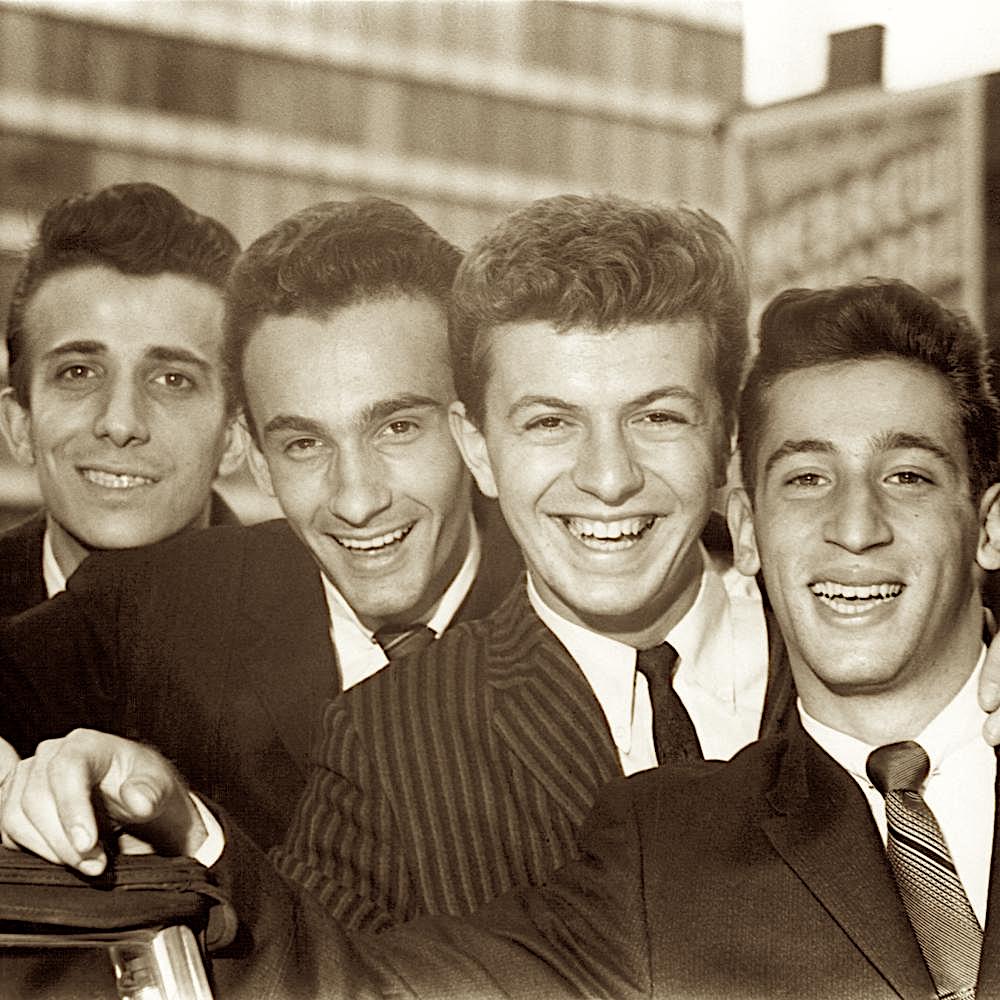 Just as
Saint-Nazaire announced he was almost ready,
there was a commotion at the door. People
were gasping, screaming, applauding—for through
the door came a short, skinny guy with
sunglasses and a golf cap turned backwards. He
was dressed all in black, a silver medallion
around his neck, and it was obvious to everyone
from the neighborhood who it was: Elena
had hired Dion Dimucci, former lead singer of
Dion and The Belmonts (left)—Dion, the
man who, with his group, was the most
influential pioneer of doo-wop music in the
1950s, a style he’d perfected singing on the
corner of Arthur Avenue and 187th Street in the
neighborhood that gave his group its name.
Just as
Saint-Nazaire announced he was almost ready,
there was a commotion at the door. People
were gasping, screaming, applauding—for through
the door came a short, skinny guy with
sunglasses and a golf cap turned backwards. He
was dressed all in black, a silver medallion
around his neck, and it was obvious to everyone
from the neighborhood who it was: Elena
had hired Dion Dimucci, former lead singer of
Dion and The Belmonts (left)—Dion, the
man who, with his group, was the most
influential pioneer of doo-wop music in the
1950s, a style he’d perfected singing on the
corner of Arthur Avenue and 187th Street in the
neighborhood that gave his group its name.
Nicola was as giddy as anyone at Dion’s
arrival and told him how much she loved his
work. Dion thanked everyone then said, “Okay,
let’s get this show on the road,” posing with
Nicola over a huge pizza set on a red-checkered
tablecloth while Joe Bastone quickly slipped in
a cassette of Dion’s greatest hits.
And as Dion’s high-pitched wailings in
“Why Must I Be a Teenager in Love?” and his
grinding growl in “The Wanderer” filled the air
at Bella Napoli, Nicola thought this had been
perhaps the most amazing week of her life.
Later that night, in her bed
in the building around the corner, that thought
worried her.
© John Mariani, 2020
By John Mariani
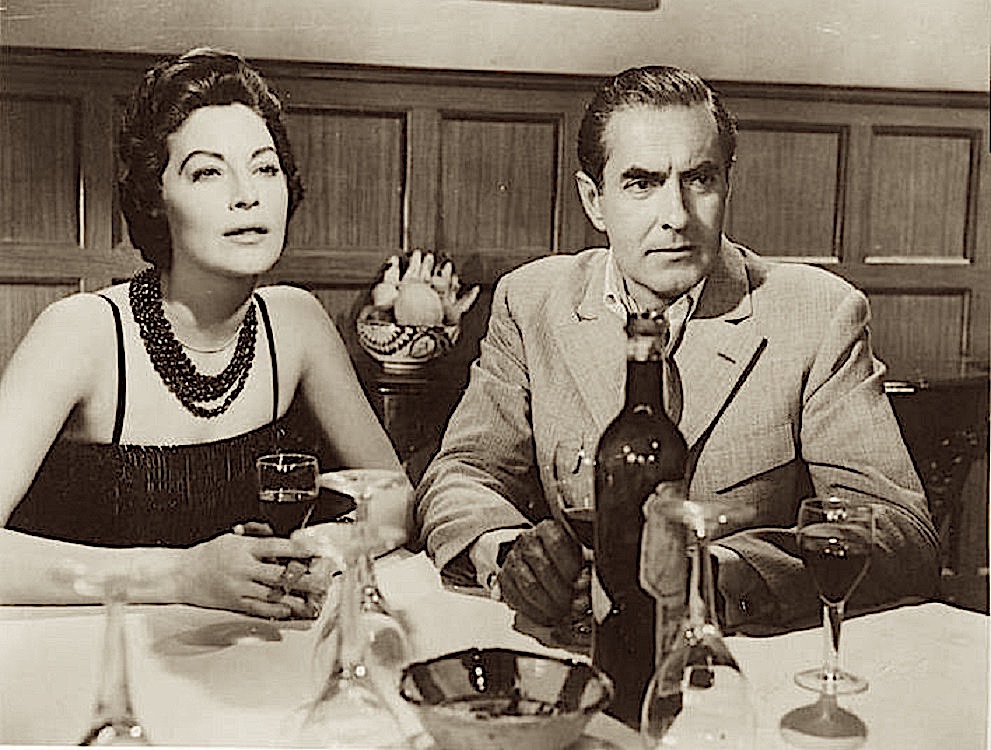
Ava Gardner and Tyrone Power in "The Sun Also Rises" (1957)
Summer’s gone, fall is upon us and the
options for wonderful wines from all over is
prime after months of “lighter” wines with
“lighter foods.” Merlot, too often the blending
varietal in bigger Cabernets, is on its own an
enchantment when it’s not too high in alcohol.
Its greatest claim to fame is, of course,
Château Pétrus and the region of Pomerol. Merlot
is, in its way, kind of a young entry into
viticulture, having been recorded in Bordeaux
only in the 19th century. Lighter versions have
their appeal in Northern Italy, and Chile now
produces some first-rate, well-priced examples.
California does, too, though the alcohol can
soar, on purpose. Some marketing firm has
declared October Merlot 2017 month, so here are
some new bottlings now in the market.
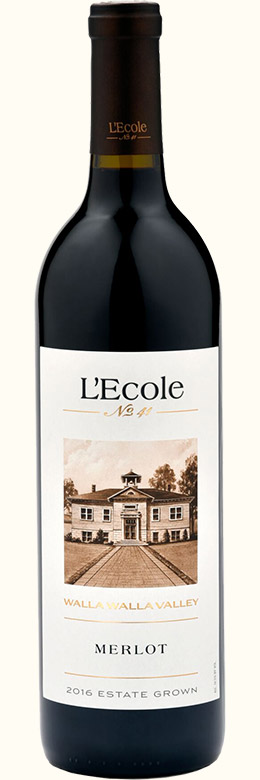 L’Ecole No. 41 Merlot
2017 ($37)—Washington States is too
often neglected in the discussion of red wines
because so much attention is paid to California
Cabernets and Oregon Pinot Noirs. Washington has
long excelled with Merlot, which on its own is
always a smooth, velvety red that goes with
anything from pizza up through game dishes. This
Walla Walla Valley varietal is made from the
grapes of two estates, with 79% Merlot, 17%
Cabernet Franc and 4% Cabernet Sauvignon, and that
vintage had a warm Indian summer. It’s about as
high in alcohol as I want to see Merlot (14.5%),
which means it is fruit forward, at least for the
time being, so drink now.
L’Ecole No. 41 Merlot
2017 ($37)—Washington States is too
often neglected in the discussion of red wines
because so much attention is paid to California
Cabernets and Oregon Pinot Noirs. Washington has
long excelled with Merlot, which on its own is
always a smooth, velvety red that goes with
anything from pizza up through game dishes. This
Walla Walla Valley varietal is made from the
grapes of two estates, with 79% Merlot, 17%
Cabernet Franc and 4% Cabernet Sauvignon, and that
vintage had a warm Indian summer. It’s about as
high in alcohol as I want to see Merlot (14.5%),
which means it is fruit forward, at least for the
time being, so drink now.
Ehlers Estate Merlot 2017 ($55)—Another big Merlot, this
one from St. Helena in Napa Valley. Blended from
three different clones, it has more complexity
than most from that region, and the 10% Cabernet
Sauvignon gives it some spine, and 22 months in
barrel harmonizes the whole of it. Sugar levels
went high at first, then settled down, so this
came out at 14.5%. Roast veal would be ideal with
this wine. But at $55 it’s getting up near the top
of Merlot prices in America. 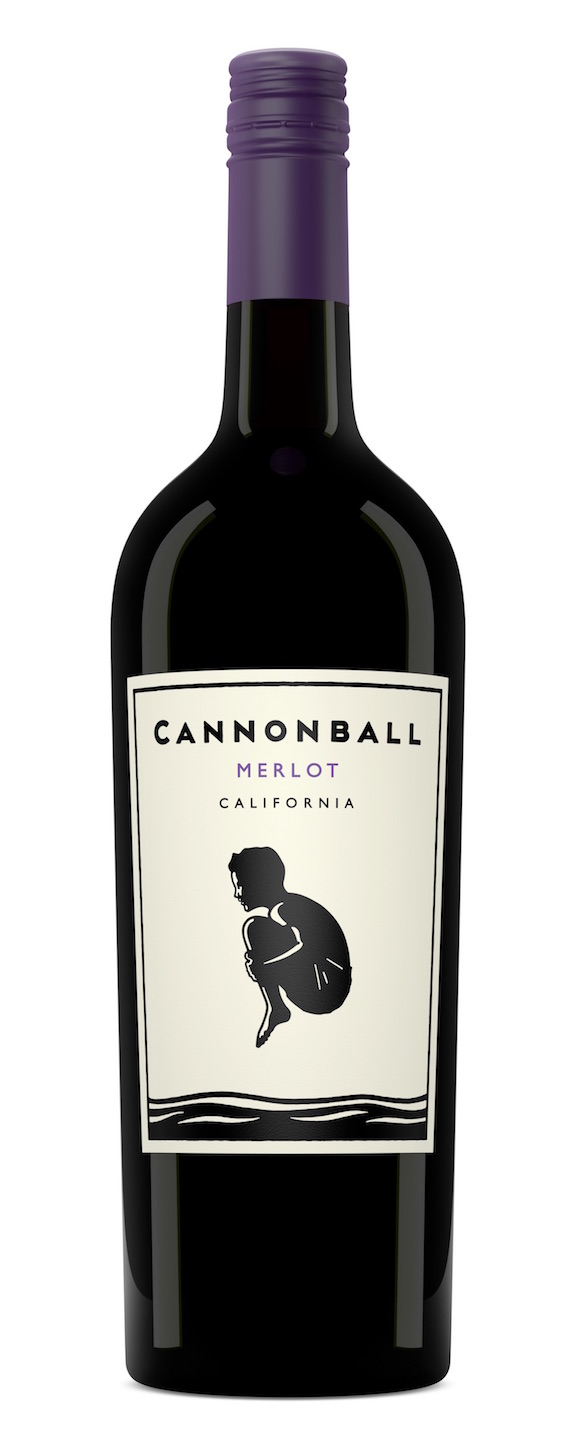
Cannonball Merlot 2017 ($14)—So, two, why not three
Merlots, this one from Mendocino, though the fruit
is sourced farther inland in Yolo County? The
price, the bold name and the screwcap should tell
you something, but this has more components that
comparable Merlots if you’re looking for a simple
but solid red wine for everyday drinking. I tasted
a $72 Merlot from a better-known producer whose
bottling was 14.9% alcohol that I pushed aside in
favor of this delightful one at 14.1%. I had it
with a tomato sauce pasta as well as chicken in a
lemon butter sauce, and it was delicious.

St. Supéry Rutherford Estate Merlot
2016 ($50)—This illustrious estate gets
its Merlot grapes from the equally illustrious
“Rutherford Bench,” whose complex soil composition
makes for an equally complex wine with rich fruit,
good acid and lush texture. The make-up is 88%
Merlot, 6% Cabernet Sauvignon, 4% Cabernet Franc
and 2% Petit Verdot, so it’s close to the flavors
you get from the wines of St. Émilion and Pomerol.
The vintage was a very fine one, and the wine
spent 19 months in new French oak to round it all
out. If you’re willing to pay the price, this will
deliver a rich reward that will match up with foie
gras, venison or roast beef.
Sponsored by

Any of John Mariani's books below may be ordered from amazon.com.
 The Hound in Heaven
(21st Century Lion Books) is a novella, and
for anyone who loves dogs, Christmas, romance,
inspiration, even the supernatural, I hope you'll find
this to be a treasured favorite. The story
concerns how, after a New England teacher, his wife and
their two daughters adopt a stray puppy found in their
barn in northern Maine, their lives seem full of promise.
But when tragedy strikes, their wonderful dog Lazarus and
the spirit of Christmas are the only things that may bring
his master back from the edge of despair.
The Hound in Heaven
(21st Century Lion Books) is a novella, and
for anyone who loves dogs, Christmas, romance,
inspiration, even the supernatural, I hope you'll find
this to be a treasured favorite. The story
concerns how, after a New England teacher, his wife and
their two daughters adopt a stray puppy found in their
barn in northern Maine, their lives seem full of promise.
But when tragedy strikes, their wonderful dog Lazarus and
the spirit of Christmas are the only things that may bring
his master back from the edge of despair. WATCH THE VIDEO!
“What a huge surprise turn this story took! I was completely stunned! I truly enjoyed this book and its message.” – Actress Ali MacGraw
“He had me at Page One. The amount of heart, human insight, soul searching, and deft literary strength that John Mariani pours into this airtight novella is vertigo-inducing. Perhaps ‘wow’ would be the best comment.” – James Dalessandro, author of Bohemian Heart and 1906.
“John Mariani’s Hound in Heaven starts with a well-painted portrayal of an American family, along with the requisite dog. A surprise event flips the action of the novel and captures us for a voyage leading to a hopeful and heart-warming message. A page turning, one sitting read, it’s the perfect antidote for the winter and promotion of holiday celebration.” – Ann Pearlman, author of The Christmas Cookie Club and A Gift for my Sister.
“John Mariani’s concise, achingly beautiful novella pulls a literary rabbit out of a hat – a mash-up of the cosmic and the intimate, the tragic and the heart-warming – a Christmas tale for all ages, and all faiths. Read it to your children, read it to yourself… but read it. Early and often. Highly recommended.” – Jay Bonansinga, New York Times bestselling author of Pinkerton’s War, The Sinking of The Eastland, and The Walking Dead: The Road To Woodbury.
“Amazing things happen when you open your heart to an animal. The Hound in Heaven delivers a powerful story of healing that is forged in the spiritual relationship between a man and his best friend. The book brings a message of hope that can enrich our images of family, love, and loss.” – Dr. Barbara Royal, author of The Royal Treatment.
 |
The Encyclopedia of American Food and Drink by John F. Mariani (Bloomsbury USA, $35) Modesty forbids me to praise my own new book, but let me proudly say that it is an extensive revision of the 4th edition that appeared more than a decade ago, before locavores, molecular cuisine, modernist cuisine, the Food Network and so much more, now included. Word origins have been completely updated, as have per capita consumption and production stats. Most important, for the first time since publication in the 1980s, the book includes more than 100 biographies of Americans who have changed the way we cook, eat and drink -- from Fannie Farmer and Julia Child to Robert Mondavi and Thomas Keller. "This book is amazing! It has entries for everything from `abalone' to `zwieback,' plus more than 500 recipes for classic American dishes and drinks."--Devra First, The Boston Globe. "Much needed in any kitchen library."--Bon Appetit. |
"Eating Italian will never be the same after reading John Mariani's entertaining and savory gastronomical history of the cuisine of Italy and how it won over appetites worldwide. . . . This book is such a tasteful narrative that it will literally make you hungry for Italian food and arouse your appetite for gastronomical history."--Don Oldenburg, USA Today. "Italian
restaurants--some good, some glitzy--far
outnumber their French rivals. Many of
these establishments are zestfully described
in How Italian Food Conquered the World, an
entertaining and fact-filled chronicle by
food-and-wine correspondent John F.
Mariani."--Aram Bakshian Jr., Wall Street
Journal.
"Equal parts
history, sociology, gastronomy, and just
plain fun, How Italian Food Conquered the
World tells the captivating and delicious
story of the (let's face it) everybody's
favorite cuisine with clarity, verve and
more than one surprise."--Colman Andrews,
editorial director of The Daily
Meal.com. "A fantastic and fascinating
read, covering everything from the influence
of Venice's spice trade to the impact of
Italian immigrants in America and the
evolution of alta cucina. This book will
serve as a terrific resource to anyone
interested in the real story of Italian
food."--Mary Ann Esposito, host of PBS-TV's
Ciao
Italia. "John Mariani has written the
definitive history of how Italians won their
way into our hearts, minds, and
stomachs. It's a story of pleasure over
pomp and taste over technique."--Danny Meyer,
owner of NYC restaurants Union Square
Cafe, The Modern, and Maialino.
|
 |
 |
 |
 |
 |
 |
 |
 |
 Everett Potter's Travel Report:
Everett Potter's Travel Report: 
 Eating Las Vegas
JOHN CURTAS has been covering the Las Vegas
food and restaurant scene since 1995. He is
the co-author of EATING LAS VEGAS – The 50
Essential Restaurants (as well as
the author of the Eating Las Vegas web site: www.eatinglasvegas.
He can also be seen every Friday morning as
the “resident foodie” for Wake Up With the
Wagners on KSNV TV (NBC) Channel 3 in
Las Vegas.
Eating Las Vegas
JOHN CURTAS has been covering the Las Vegas
food and restaurant scene since 1995. He is
the co-author of EATING LAS VEGAS – The 50
Essential Restaurants (as well as
the author of the Eating Las Vegas web site: www.eatinglasvegas.
He can also be seen every Friday morning as
the “resident foodie” for Wake Up With the
Wagners on KSNV TV (NBC) Channel 3 in
Las Vegas.
MARIANI'S VIRTUAL GOURMET
NEWSLETTER is published weekly. Publisher: John Mariani. Editor: Walter Bagley. Contributing Writers: Christopher Mariani,
Robert Mariani, Misha Mariani, John A. Curtas, Gerry Dawes, Geoff Kalish,
and Brian Freedman. Contributing
Photographer: Galina Dargery. Technical
Advisor: Gerry
McLoughlin.
If you wish to subscribe to this
newsletter, please click here: http://www.johnmariani.com/subscribe/index.html
© copyright John Mariani 2020

